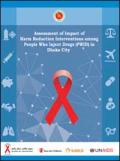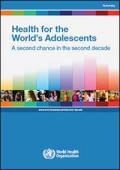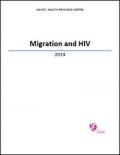What's New
Displaying results 3181 - 3190 of 4914

Resource | Publications,
A second round of estimates and projections was conducted in 2007 to estimate future burden and impacts of HIV/AIDS in order to inform national programs anticipating prevention and care needs in Viet Nam. Similar to the 2003 estimates and projections process, seroprevalence data, population size estimates, and pertinent data from ad hoc studies were entered into the Estimation and Projection Package (EPP) Version 3.0 R9 to generate low, medium, and high scenarios of the HIV epidemic. The epidemic curves generated by EPP were then combined with antiretroviral therapy (ART) and prevention of mother to child (PMTCT) data into a second modeling program, SPECTRUM Version 3.14, for further estimates of prevalence, treatment needs, and AIDS related mortality, among other important data presented in this report. National and region-specific outcomes were generated for the 1990-2012 period in Viet Nam and apply to both the general and high risk populations nationwide.

Resource | Publications,
Fast-tracking the AIDS response and setting ambitious targets are critical to ending the AIDS epidemic. This requires transforming the vision of zero new HIV infections, zero discrimination and zero AIDS-related deaths into concrete milestones and endpoints.

Resource | Publications,
The UNAIDS report Fast-Track: Ending the AIDS Epidemic by 2030 outlines that by taking the Fast-Track approach nearly 28 million new HIV infections and 21 million AIDS-related deaths would be averted by 2030.

Resource | Publications,
The qualitative study, commissioned by Care Nepal, sought to explore the effects and outcomes of the EMPHASIS project, launched four years ago to reduce HIV and AIDS vulnerability among cross border migrants; and to influence national and regional policies relating to safe mobility through evidence generated regionally. The project, working along a continuum of source, transit, and destination areas, provides HIV prevention and treatment services to migrants and their families. Additionally, the project partners with local stakeholders to ensure safe passage of migrants on transit besides providing other support services. The study was, thus, designed to assess the influence of the project in addressing HIV vulnerabilities, and at the same to enquire into whether inter country passage has been made safer for migrants.

Resource | Publications,
This assessment was carried out to understand the dynamics of risk behavior and to provide a description of the current situation of the HIV epidemic in Bangladesh as well as its future projections. The study was supported by: the National AIDS/STD Program (NASP), IEDCR, Save the Children, UNAIDS Bangladesh, icddr,b and CDC Atlanta.
The aim of the study is to understand the HIV transmission dynamics and epidemiological trends in Dhaka city and to estimate the extent to which harm reduction interventions among PWID have contributed towards the epidemiological trends and reduced HIV transmission in the city. Cost efficiency of the existing harm reduction interventions is also examined.

Resource | Publications,
What must we do to improve and maintain the health of the world’s one billion adolescents? Health for the world’s adolescents is a World Health Organization (WHO) report fully addressing that question across the broad range of health needs of people ages 10–19 years. It was presented to Member States at the 2014 World Health Assembly in follow-up to its 2011 Resolution 64.28, Youth and health risks.
Health for the world’s adolescents is a dynamic, multimedia, online report (who.int/maternal_child_adolescent/topics/adolescence/second-decade/en/). It describes why adolescents need specific attention, distinct from children and adults. It presents a global overview of adolescents’ health and health-related behaviours, including the latest data and trends, and discusses the determinants that influence their health and behaviours. It features adolescents’ own perspectives on their health needs.
The report brings together all WHO guidance concerning adolescents across the full spectrum of health issues.

Resource | Publications,
This report’s review of the recent past suggests an agenda for advancing human development in Thailand over the years ahead: improving the quality of education; sustaining the successes in healthcare; completing the framework of social protection; confronting the issues of environmental decline and climate change; and tackling inequalities.
But there is a new feature on the political landscape that needs to be taken into consideration in this task. At the end of 2015, Thailand will become part of the ASEAN Community. ASEAN has been in existence for over half a century as a security grouping, and more recently as an evolving free trade area. But its transformation into a “Community” signals something new and potentially momentous in the region. What are the implications of this innovation for advancing human development in Thailand? That is the focus of this report.

Resource | Publications,
Being a migrant is not a risk factor in itself, but poorer health and higher HIV vulnerability among migrants are explained by: discrimination, gender inequality, sexual violence and exploitation, dangerous working environments, poor living conditions, poor access to education and social services and, most importantly, poor access to health care. Migrants often lack access to mainstream health care, education and social services. Many migrants do not have legal status within their destination countries and live in isolation, making it difficult to protect themselves against the people who might exploit them or sexually abuse them. Social isolation and other factors may lead migrants to participate in high-risk behavior, including use of drugs and alcohol.
This regional review is curtailed due to the breadth of the topic. Migratory trends, economic push-pull factors, HIV epidemiological data, legal and policy environments, as well as national/regional HIV programming are all essential elements of any discussion on HIV and migration. This review will touch on all of these elements in a limited fashion while focusing on two high-volume migratory corridors that reflect the current trends in HIV epidemiology among migrant and mobile populations in Asia and the Pacific.

Resource | Publications,
Globally, prisons and other closed settings are characterized by relatively high prevalence of HIV, hepatitis B and C and tuberculosis (TB) and relatively higher risks for transmission together with lower access to health services. Isolated from public health services, including national AIDS or TB programmes, prisons and other closed settings are often seriously neglected in country responses to address HIV and TB prevention, treatment and care. The United Nations Office on Drugs and Crime (UNODC), the World Health Organization (WHO) and UNAIDS advocate for the implementation of evidence-based interventions that aim to ensure access to services for populations at higher risk. This includes a comprehensive programme for the prevention, treatment and care of HIV and TB among people in prisons and other closed settings.

Resource | Publications,
This report identifies the current status of policy and legal environment in Malaysia that safeguard the universal human rights of the key affected populations with regard to the HIV prevention, care and treatment. The review and consultation establishes a baseline on the current enabling environment (policies and laws) in relation to safeguarding the human rights of the key populations and second, and it provides a set of recommendations to input into any reforms to promote an enabling environment where the human rights of the key populations are protected.





